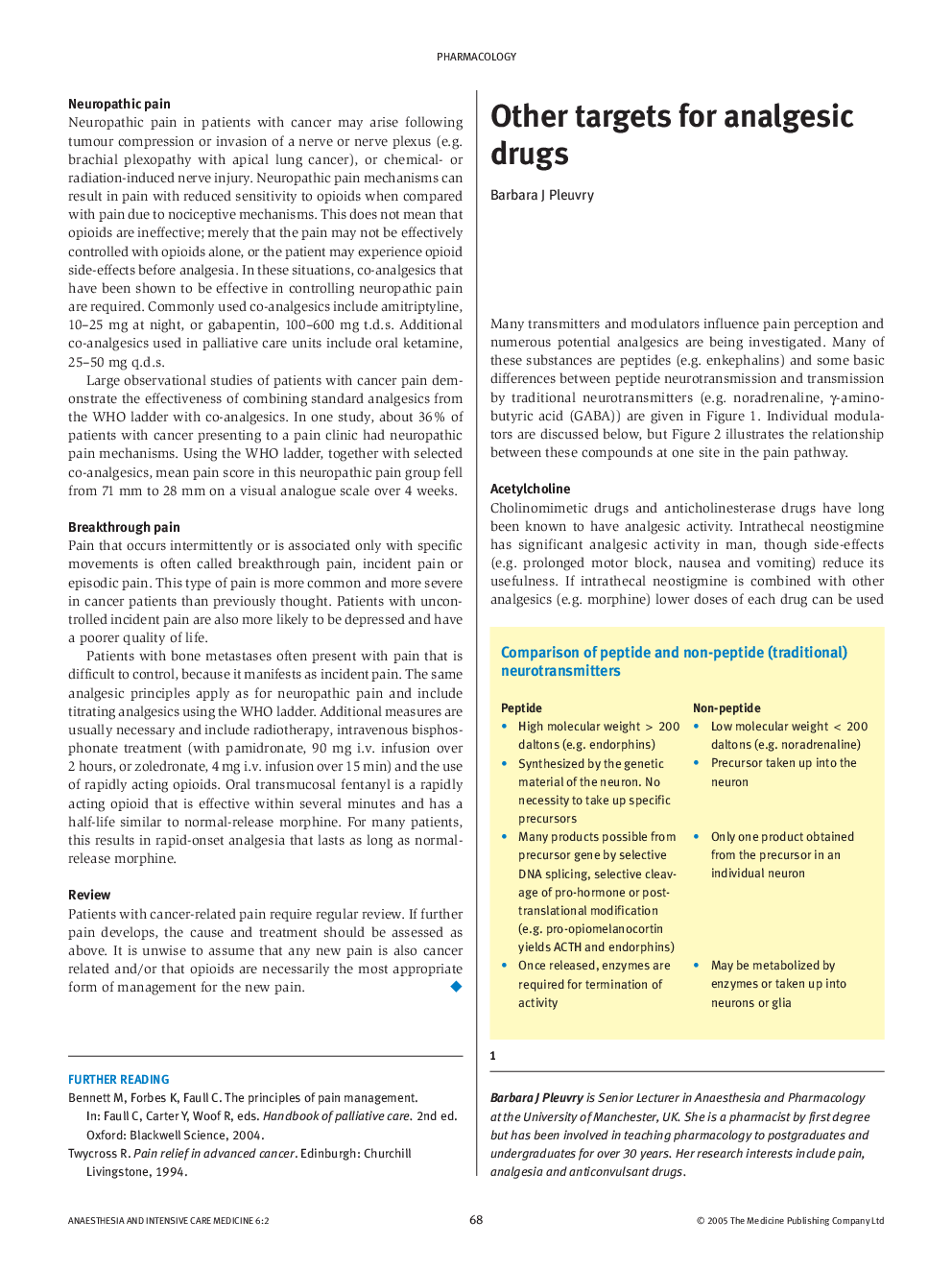| Article ID | Journal | Published Year | Pages | File Type |
|---|---|---|---|---|
| 9089711 | Anaesthesia & Intensive Care Medicine | 2005 | 5 Pages |
Abstract
Conventional analgesics such as opioids and non-steroidal anti-inflammatory drugs (NSAIDs) are effective in acute pain, but chronic pain is often poorly controlled. This article examines other mechanisms by which pain can be modulated and indicates areas in which pain research is continuing and which new drugs are at the basic research or clinical trial stage. Important candidates include agonists at nicotinic receptors to acetylcholine and the calcium antagonist conotoxins, derived from the sea snail. In some areas, useful improvements to current drug efficacy can be achieved by combination with new agents, such as morphine with cholecystokinin antagonists, or morphine with NMDA antagonists such as dextromethorphan. Some neurotransmitters (e.g. 5-hydroxtryptamine) may induce pain at one receptor but reduce it at another. Achieving analgesia in these circumstances relies on high receptor selectivity or local administration.
Related Topics
Health Sciences
Medicine and Dentistry
Anesthesiology and Pain Medicine
Authors
Barbara J Pleuvry,
